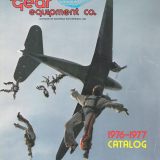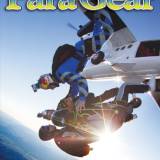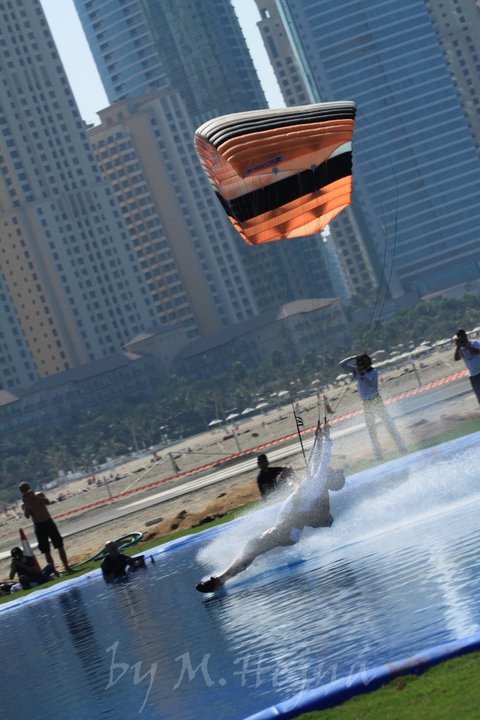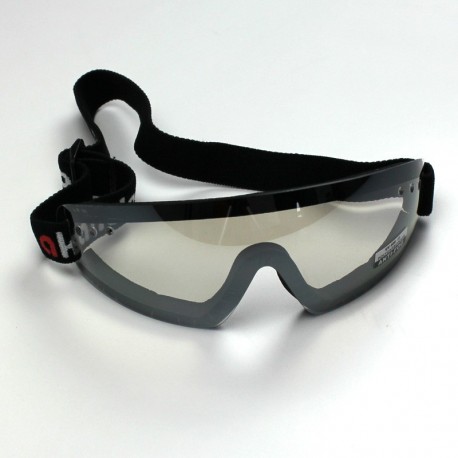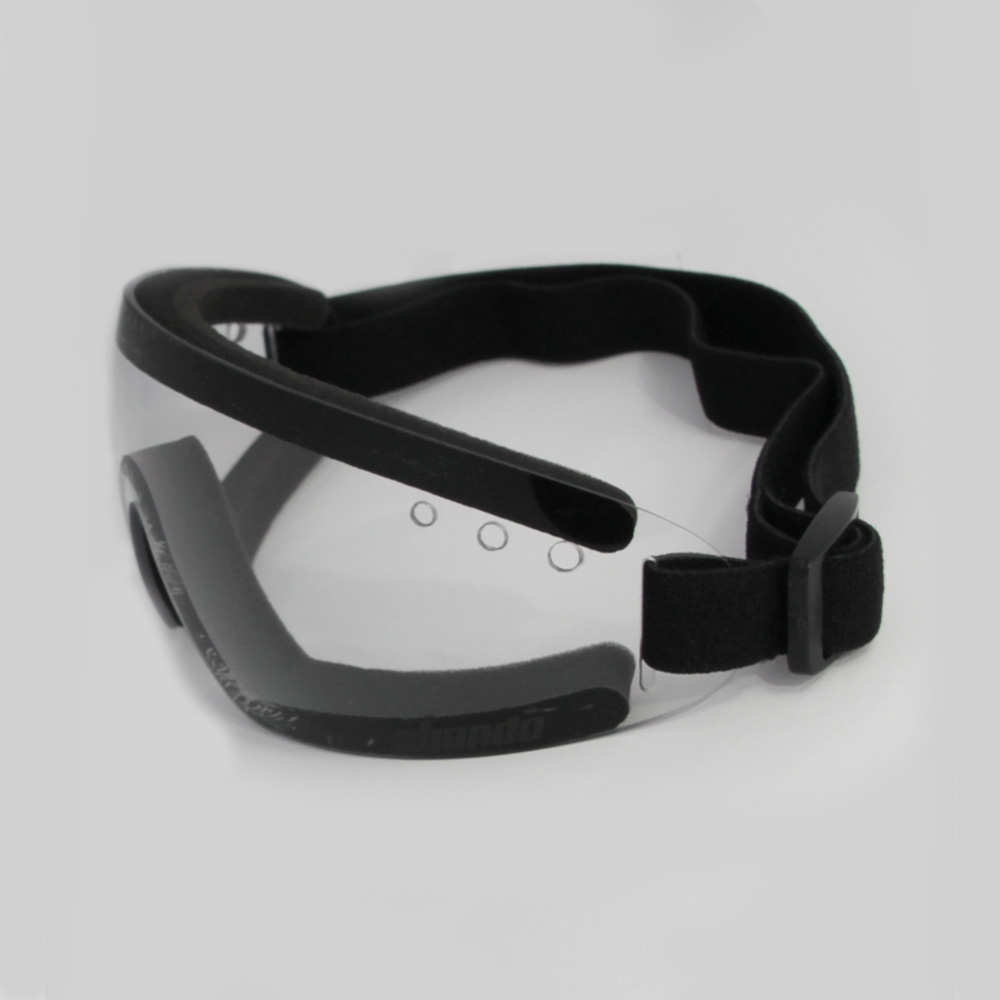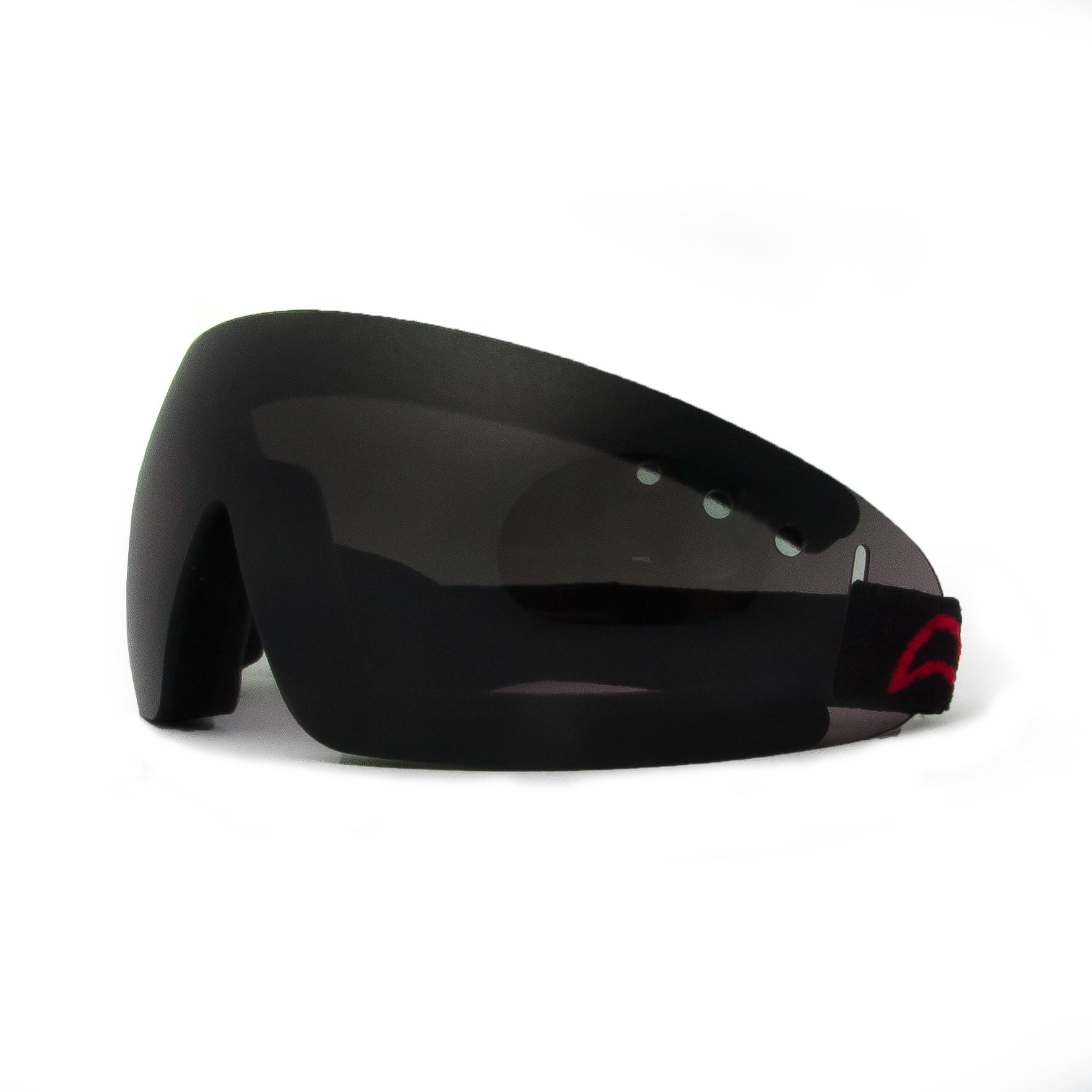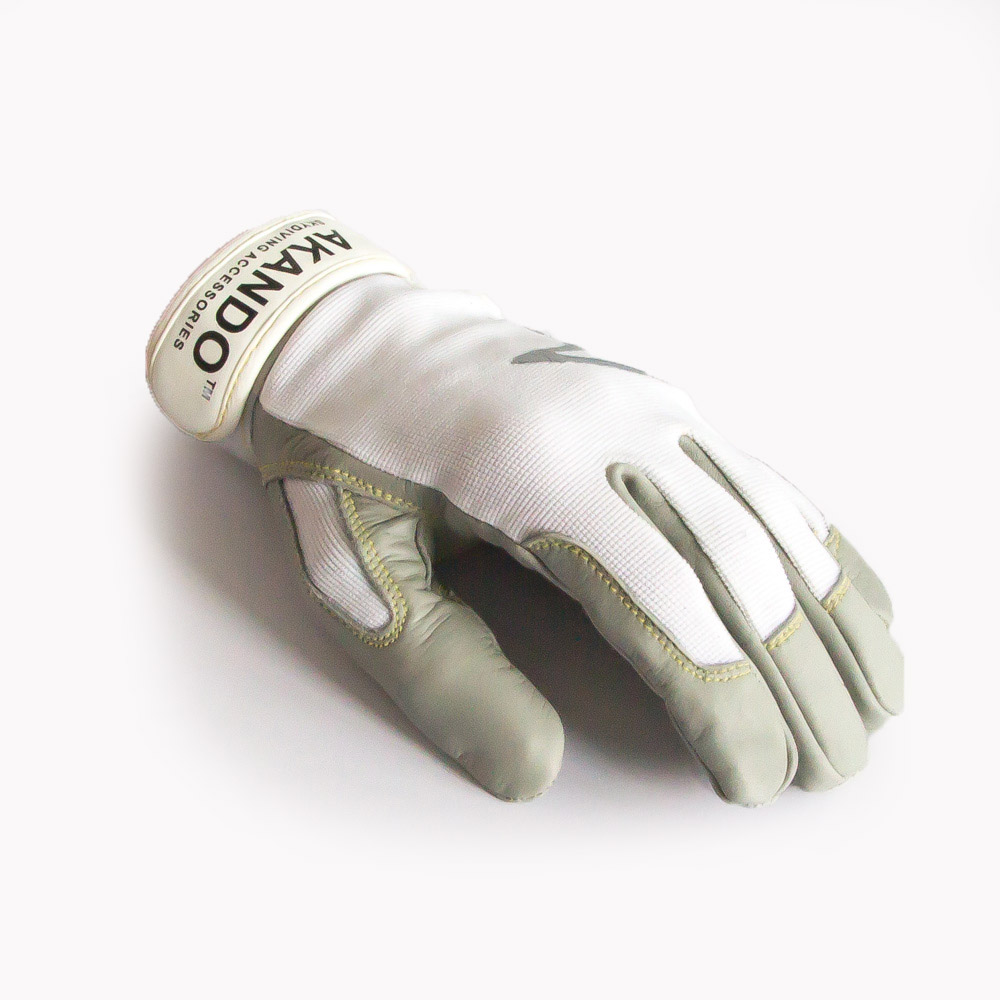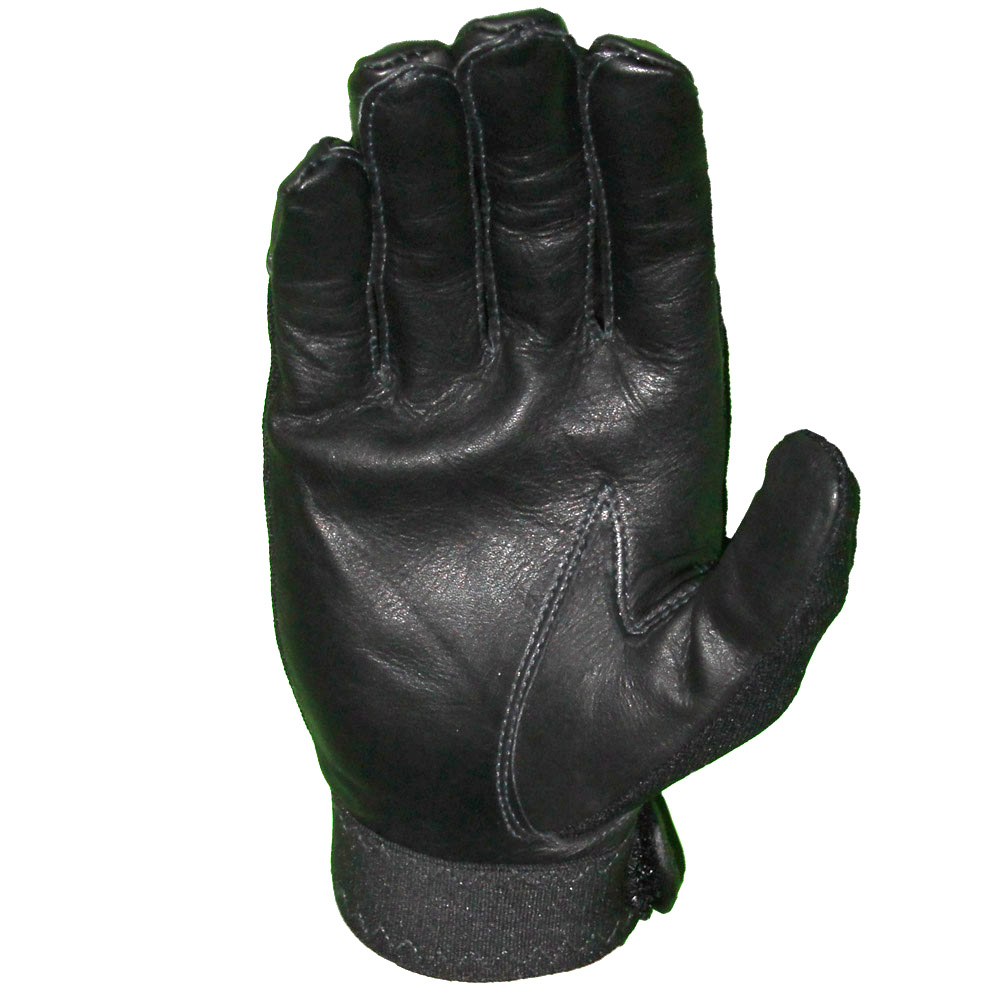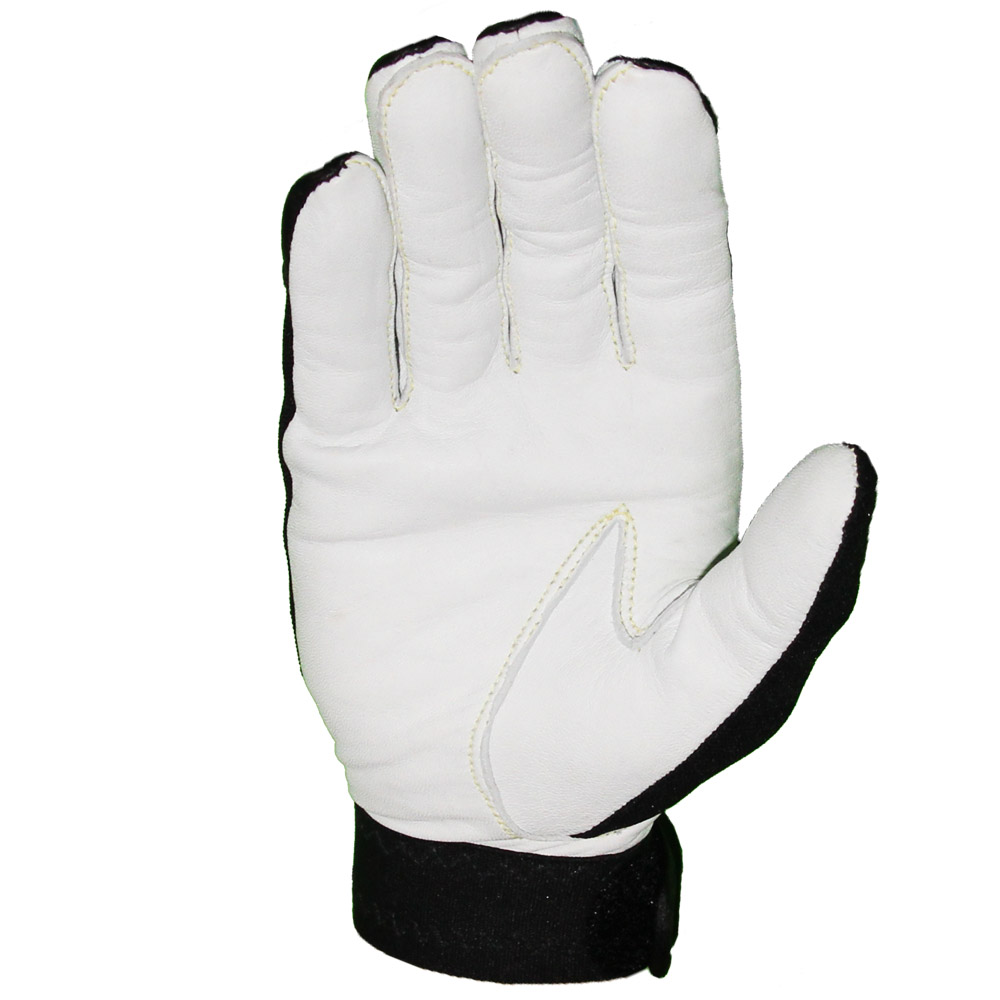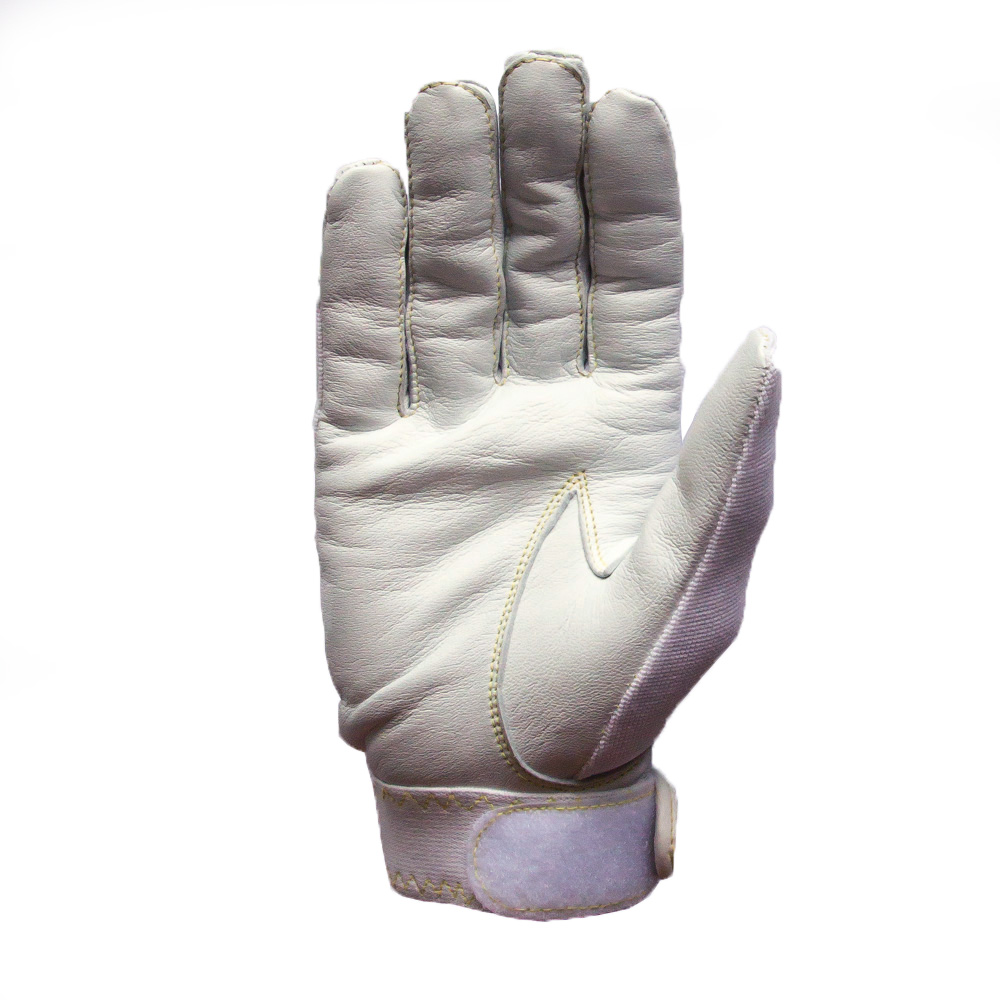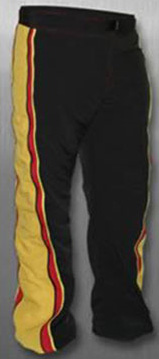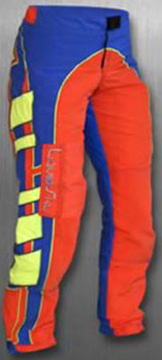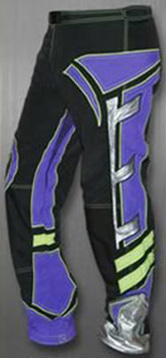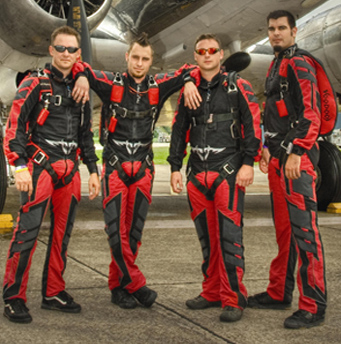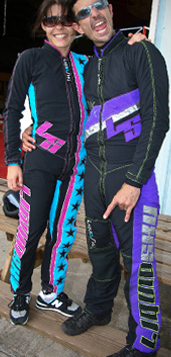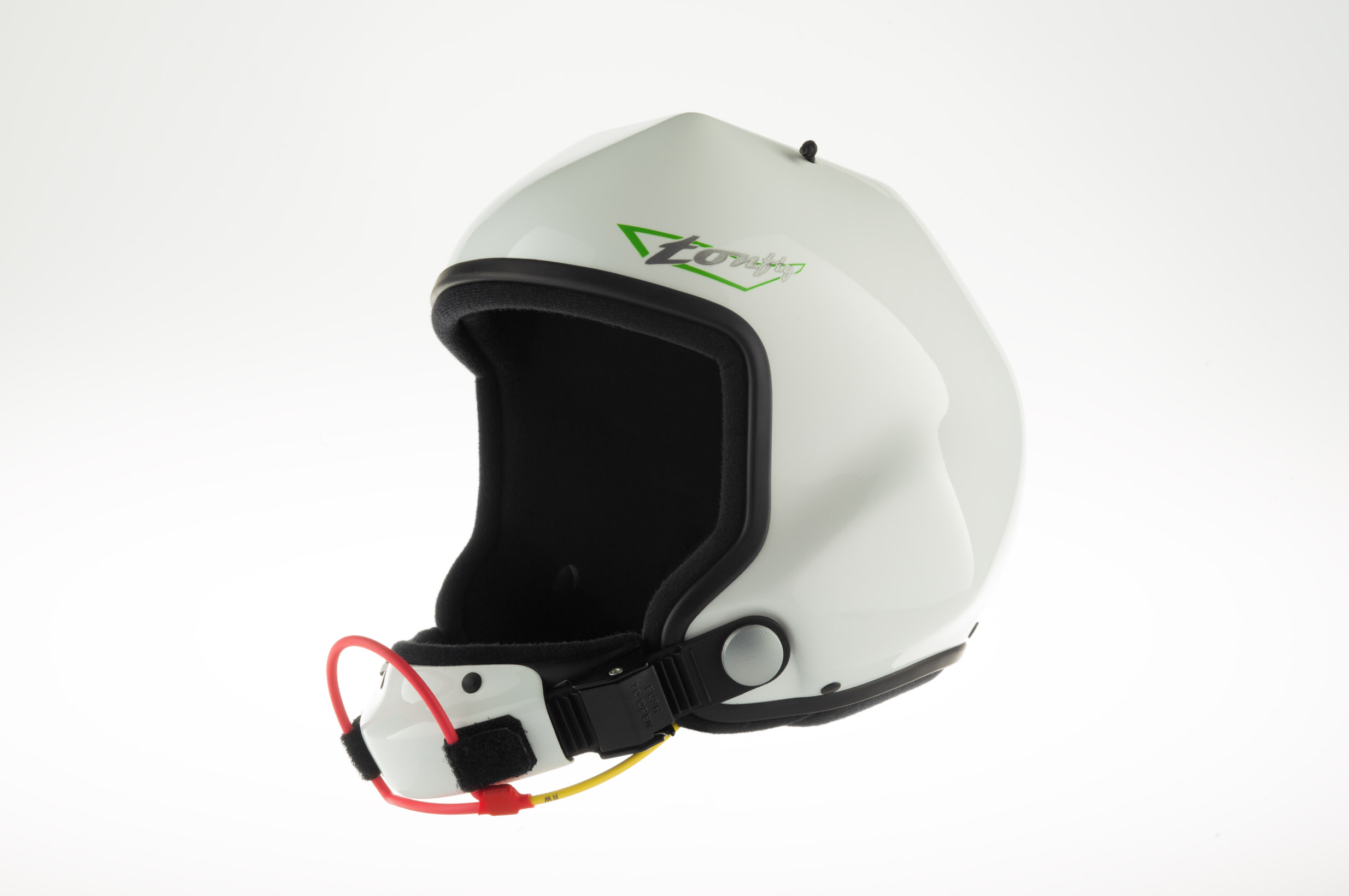-
Content
-14 -
Joined
-
Last visited
-
Days Won
1 -
Feedback
0%
Content Type
Profiles
Forums
Calendar
Dropzones
Gear
Articles
Fatalities
Stolen
Indoor
Help
Downloads
Gallery
Blogs
Store
Videos
Classifieds
Everything posted by admin
-
-
Anti scratch, anti fog polycarbonate lens with strategically placed holes provide distortion free vision in extreme conditions. Many world class gold medals in skydiving accuracy have been won with these goggles proving that when it comes to clear vision Akando goggles are no. 1 choice. Besides being stylish in appearance, they provide UV protection.
-
Anti scratch, anti fog polycarbonate lens with strategically placed holes provide distortion free vision in extreme conditions. Many world class gold medals in skydiving accuracy have been won with these goggles proving that when it comes to clear vision Akando goggles are no. 1 choice. Besides being stylish in appearance, they provide UV protection.
-
Anti scratch, anti fog polycarbonate lens with strategically placed holes provide distortion free vision in extreme conditions. Many world class gold medals in skydiving accuracy have been won with these goggles proving that when it comes to clear vision Akando goggles are no. 1 choice. Besides being stylish in appearance, they provide UV protection.
-
Anti scratch, anti fog polycarbonate lens with strategically placed holes provide distortion free vision in extreme conditions. Many world class gold medals in skydiving accuracy have been won with these goggles proving that when it comes to clear vision Akando goggles are no. 1 choice. Besides being stylish in appearance, they provide UV protection.
-
Combination of black cowhide leather and windstopper back and cotton insulation provide that extra warmth without loss of feel and precision for those off season jumps. Windstopper material allows perspiration out of the glove, while preventing outside wind to come in. All this comes with great overall looks. Color combinations: black-windstopper/black-leather NOTE FOR SELECTING THE SIZE: Since winter gloves have extra lining, please take it into account when selecting the correct size, especially if you have thicker fingers. We advise you to select one size up the scale.
-
-
Akando Pro Black Gloves Black cowhide leather on palm with outside seams on fingers makes this glove durable, yet soft and grippy. Stylish design and black fourway spandex on the back side will add to your overall appearance. Protect your hands in extreme conditions! Good grip on exit, ease of finding handles and protection for those occasionall unpredicted landings.
-
Akando Classic Black gloves Sheep skin leather on the palm and fourway spandex on the back make this glove easy choice for all skydivers. Outside seams on fingers and grippy, soft, but durable leather provide maximum feel and safety during jumps. Unblock the command lines with ease after safely opening your chute, prepare your wing suit for landing are just a few of the situations where Akando classic gloves excel. Black spandex and white leather combination is perfect choice for all skydivers who need ultimate in functionality, protection, grip and appearance.
-
Akando Classic White Gloves Sheep skin leather on the palm and fourway spandex on the back makes this gloves easy choice for all skydivers. Outside seams on fingers and grippy, soft, but durable leather provide maximum feel and safety during jumps. Unblock the command lines with ease after safely opening your chute, prepare your wing suit for landing are just a few of the situations where Akando classic gloves excel. All white combination is preferred by RW and advanced jumpers, and all others who enjoy ultimate in appearance, functionality and protection.
-
An unplanned water landing is a frightening scenario for many skydivers; it’s one of the reasons that live water training is required for a USPA B License (If you didn’t truly get wet when working on your USPA B license, your instructors weren’t doing you or anyone else any favors). Add a wingsuit to the mix and it’s enough to give pause to even the most experienced skydiver. In 2010 alone, we’ve had three known unintentional wingsuit water entries in the USA. Wingsuits can fly further than skydivers can, and water is an attractive hazard to fly-over. Toss in a low deployment, restricted movement, and some adrenaline and a normal skydive can get really exciting really fast. OK, so it’s not quite the same as Houdini and his locks, and skydiving in a “prom dress” or freefall in a straight jacket isn’t nearly as difficult as some make it out to be. However, emergency situations do require a different approach. Wingsuit skydivers should pre-plan for an unintentional water landing even if flight over water isn’t an issue at their home DZ. A boogie or other special event may put wingsuit pilots into unfamiliar situations where water is present. Flotation devices should be a part of that pre-planning process if over-water flights are a common occurrence. TSA allows for up to four Co2 cartridges to be carried as part of a "life-vest unit." USPA Training And Recommendarions Section 6.2 of the USPA Skydiver Instruction Manual (SIM) guidance for unintentional water landings tells us to: a. Continue to steer to avoid the water hazard. b. Activate the flotation device, if available. c. Disconnect the chest strap to facilitate getting out of the harness after landing in the water. d. Disconnect the reserve static line (if applicable) to reduce complications in case the main needs to be cut away after splashing down. e. Steer into the wind. f. Loosen the leg straps slightly to facilitate getting out of the harness after splashing down. (1) If you loosen the leg straps too much, you may not be able to reach the toggles. (2) Do not unfasten the leg straps until your feet are in the water. g. Prepare for a PLF, in case the water is shallow (it will be nearly impossible to determine the depth from above). h. Flare to half brakes at ten feet above the water (this may be difficult to judge, due to poor depth perception over the water). i. Enter the water with your lungs filled with air. j. After entering the water, throw your arms back and slide forward out of the harness. (1) Remain in the harness and attached to the canopy until actually in the water. (2) If cutting away (known deep water only), do so only after both feet contact the water. (3) If flotation gear is not used, separation from the equipment is essential. k. Dive deep and swim out from under the collapsed canopy. All of these same procedures apply when wearing a wingsuit, yet preparations for an unintentional water landing don’t stop there. We still got work to do. Prior To Entering The Water It goes without saying that the best way to avoid a water landing is to avoid being over the water. However, sometimes it cannot be avoided. In addition to the previously mentioned, USPA-recommended actions, the wingsuit should be unzipped as much as possible prior to landing. This includes armwings, legwings, and body zippers if possible. Do not pull the cutaway/release cables on the wingsuit (assuming the wingsuit has cutaway cables, not all do) if the arms can be unzipped. An armwing that has been cut away will be much more difficult to move and unzip once it has filled with water and your arms are still in the sleeves (For example, the newest Phoenix-fly wingsuit arms might be cut away, as they detach the full wing from the arm, but the arm will still be inside a foam sleeve making it difficult to swim). The tailwing may act as a drag point and force the upper body forward, putting the skydiver on his belly. Enter the water with feet and knees together. Flying at half brakes should allow the canopy to continue forward. Do not flare. Take a deep breath prior to entering the water. After Entering The Water The canopy is a potential point of entanglement. It is recommended that a main canopy be cut away once you are fully in the water. If there is a current, this will prevent the main from dragging you along with it. A reserve cannot be cut away without a hook knife (if you are going to carry a hook knife, carry a metal, not plastic hook knife. A $5.00 hook knife will not do the job). Roll backward or sideways onto your back. If you have not deployed the reserve, the reserve will keep you floating for approximately 30 minutes in fresh water, longer in saltwater. With the tail (and perhaps the armwings) potentially being still inflated, being on your back will prevent the tail and rig from forcing your face into the water. Try to remain calm, breathe deeply and begin the process of removing goggles, helmet, and legstraps (chest strap if it was not undone in the air). The arm and legwings of a three-wing style wingsuit are similar to a ram-air parachute; there is an inlet and air fills the cells. These same inlets and cells can fill with water as easily as they fill with air. Although water in the cells alone will not cause the wingsuit to sink, movement of the wing will cause the suit to be dragged downward. This means that attempting to tread water will drag you under. Do not attempt to tread water, but rather keep your legs motionless. If there is any current, it is imperative that you stay on your back and try to keep your head upstream. Keeping the legs apart will help achieve this goal. Even a slow current will move your body very fast. Remaining calm is perhaps the most important aspect of clearing the suit and surviving. Jeans, boots, and gloves can make the task of escape a little more difficult than expected. Once you are fully unzipped and your legstraps loose, slide your rig and armwings off. After the upper body has been freed, “sit down” in the rig and suit to put you head-high. This allows the torso to roll forward so that it’s possible to dive deep and away from the rig, allowing the legs to escape from the legstraps and tailwing. Although the USPA SIM instructs skydivers to swim away from their rig, I have made the personal choice that I will not swim away from my rig if the reserve has not been deployed. It may be used as a flotation device and might be the difference between life and death. I will cut away the main canopy and swim away from the main. This is my personal decision and is in opposition to USPA recommendations. Follow at your own risk. During the various water experiments, there were a total of 49 water entries in various conditions and wingsuits, all with a rig or dummy rig in place, many with a main canopy attached. Performance Designs Sabre II, Silhouette, and Storm canopies were used. We jumped into still water 18’ deep, 6’ deep, current pools 34” and 24” deep with speeds up to 7 knots. We also jumped into wave pools with swells of up to 3’, which are small to moderate compared to coastline swells. Tossing the main canopy into the 7 knot current pool. Summary During these entries, three things became clear; Go into the water with as many zippers undone as possible. Your chest strap should also be undone for best possible speed once in the water. while this may seem logical, in at least two of the three unintentional water landings, the wingsuiter forgot to unzip arms while dealing with other issues. Get onto your back as quickly as you can. Stay on your back as legstraps, zippers, helmet releases, and goggles are removed. You may want to consider leaving the helmet on if in moving water and head protection is needed. Take a deep, calming breath. Even though my experiments were intentional water landings, they were still nerve-wracking when the suits were fully zipped up. Being jittery is entirely likely. Staying calm and keeping heart and breathing rates down may easily be the difference in survival, particularly in cold water. Be sure to stay clear of the canopy and lines. Currents may drag the canopy around a bit. Rescuers might have an easier time finding you if they can spot the canopy in the water so staying somewhat near but well clear of canopy and lines is a good idea. A hook knife should be part of your kit. When landing in water that has a current, try to keep your head upstream while getting out of the suit. Leave the helmet on to protect your head from rocks and other objects. Stay as far away from the canopy as possible. This is easier said than done. Note that in the video, the current combined with the canopy drag was more than two men could manage even in shallow water. This is where a hook knife would be beneficial. If the rig has a reserve still packed in it, it will float. It also is very easy to escape once the legstraps are undone, as it will remain on top of the water as you dive forward away from the container. "Exiting" from the 3 meter board, fully zipped In conclusion, if over-water wingsuit flights are planned, seriously consider a floatation device. They will not have a significant impact on the comfort of the suit, and are not relatively expensive. ParaGear, ChutingStar, and other skydiving supply shops sell these devices. Remember that CO2 cartridges may not be carried aboard a commercial flight, so you’ll need to source or ship cartridges to your final destination. If a flotation device is not part of your gear/kit, have an advance plan in the event of a water landing. There have been at least three known unintentional water landings in the US this year; only through luck and calm procedures did the wingsuiters survive. Read the Incident Report below to see how one survivor described his experiences and how multiple errors led him into the water. Big puffies and blue skies (and calm waters, I suppose)! -d Douglas Spotted Eagle is a USPA AFFI, Coach Examiner, PRO, and PFC Senior Examiner (North America) on staff at Skydive Elsinore. Student’s Incident report: ##### Name [Deleted] My age: 31 Years in the sport: 4.5 yrs. # of skydives: 287 # of Wingsuit SD’s: 7 # of BASE: 70+ I recently purchased a new Phantom2 Pheonix fly wingsuit and was super eager to get in the air. I got to the DZ and got on the first available load which was a 10 minute call. On any typical skydive, an immediete 10 minute call upon arrival isn’t so bad, but setting up a wingsuit system quickly is not a great idea, but I did. Mistake #1: I forced myself to have to rush to get on a load to do a technical jump for no apparent reason. In the end, I don’t think my rushed preparation lead to the actual situation, but I guess my mind wasn’t where it should have been. I was the last to exit from 12,500?. I had a really great (mostly stable) flight, flying around some clouds. At pull time, like most jumps, I was out over the ocean. I took one last look at my wrist alti at 5K’. Based on my audibles 4000? warning, I’m guessing I was open between 3500?-3000?. Mistake #2: I shouldn’t have pulled that low with a WS on with my low experience level. Mistake #3: I have made 6 previous WS jumps. All more than 2.5 years ago. I did not physically or mentally dirt dive this jump before getting on the plane. After a stable pull (I felt), I immediatley opended with line twists. I’ve had line twist before with this canopy/harness (Sabre 1, 150; 9 cell/Infinity dom;1997) and was able to kick out of them in the past. This line twist began to accelerate instantly. I made 3-4 attempts to kick out of it, but with the restricted movement of my legs in the WS, and spinning horizontally around the canopy, it didn’t do much at all. Mistake #4: I was under too small of a canopy for a WS jump. My exit weight= 240lbs. Wind loading= 1.6. I should have been under a more docile (7 cell), or larger canopy. So, having no luck with my kick attemps, I chopped it. It took me a few seconds to locate my handles (one hand on each). In my haste, I did a “T-Rex” style cut-away. As soon as I saw my right riser clear, I let go of the handle and pulled the reserve (also “T-rex”). Obviously leading to my main still dragging off my left shoulder. Mistake #5: I was jumping a borrowed rig. Although I’ve had about 20 uneventful (other than line twist) jumps with this rig. I wasn’t really familiar with it. Mistake #6: Probably the biggest one. I DID NOT CLEAR MY CUT AWAY CABLE/HANDLE COMPLETELY! Mistake #7: This goes right along with the above…Pulling my reserve WAY TOO SOON! I think because of my slightly slower descent rate (caused by my main still being attached), and my reserve already fired, I felt the second set of risers bouncing around on my head and saw all the lines whipping in-front of my face. As the reserve was slowly coming to line stretch, the lines were beginning to entangle with my helmet (actually the camera on my helmet) Mistake #8: Wearing a camera on a “student” WS jump. With the lines still “somewhat” relaxed, I thought of dumping my helmet but instead I picked/brushed the lines off the camera, clearing them. A split second later, I felt the canopy pressurize and go to complete line stretch. Instantly, the reserve risers had forced my head completely forward, making my chin squeeze into my neck. I knew I had MAJOR line twists on my reserve now too. So now, I’m under one collapsed main still dragging off my left riser, and one tightly twisted up reserve to my right side, still fully zipped into my WS, and I’m getting choked from behind by the reserve risers and can’t lift my head to see any of it. I knew I wasn’t “falling” anymore and that the canopies were not entangled. I don’t know, but the reserve must have been “un-spinning” because the pressure was slowly coming off the back of my neck and the twist opened up enough to squeeze my head back through, behind the risers. Mistake #9: Not sure if I could have prevented this one. If my arms had been unzipped and out of the wings (which they weren’t) I may have been able to reach back during the reserve deployment, and guided the risers in-front of my head before pressurization. At this point, my first objective was to finally cut the main off so I could get completely out of my reserve line twists. The main was still being held on by 1cm of ripcord cable still in the three ring release closing loop. In any case…I was focused on getting that last tinny bit of rip cord out of the closing loop. I had “tunnel” vision on trying to pick at the centimeter of cord. There was too much tension on the riser so I couldn’t get it out. I was definitely not thinking clearly at that moment. ALL I had to do was find my cut-away handle floating behind me and pull it another 1/4 inch. In retrospect, the dragging main (acting like an anchor) may have kept my reserve from continuing to twist and spin me into the ground/water. I’m not sure if completely cutting away at that point would have been any better. Mistake #10: Had I been thinking clearly, I would have found my handle and finished the job of cutting away. At this point I stopped all attempts to correct anything. I saw that I was about 300 yards(?) of the beach, over the water at about 500-300?(?) up. I knew I was going for a swim. The swell was small (2-3?), but definitely was not flat and calm. In preparation for my mid day swim, I started unzipping everything…chest, arms, legs, chest strap. I then reached above the reserve line twist, grabbed the rear/right line set and did a “rear riser” turn towards the visibly shallower water over the reef. I don't know if that helped at all because I pretty much felt like I was under a round canopy with no directional control. I just knew I was drifting towards the reef now. Not knowing the shallowness above the reef gave me a second of pucker factor, but at this point I had not much control or time anyway. I then did a “backwards” PLF (obviously with no flare, toggles still stowed and twisted). I slammed the water pretty hard. Mistake #11: Although this is what saved me from serious impact, I landed in the water with a WS on….not good! While I was underwater, my wingsuit quickly turned into a tunasuit, but before I even had time to deal with the next hurdle……..I stood up. I was now standing 300 yards out in the surf, in 3 feet of water with both canopies attached and the WS on, all filled with water. I was getting dragged in-land with the swell a little bit, but had plenty of time to finally cut-away the main and completely step out of the WS. I saw all the scrambling of people on the shore. I was soon reached by a couple of skydivers and a rescue kayak. We loaded up the rig on to the kayak and swam back to shore. Mistake #12: I probably should have made my first priority to un-zip my wings. Although, at no point did I feel like they were restraining my movement (until I wanted to steer towards the reef). I guess I unzipped them right when I had a moment and thought it was totally needed. ####### Massive thanks to: Lake Elsinore Casino Tooele City Pool Raging Waters/SLC Skydive Elsinore Skydive Utah Performance Designs Rigging Innovations Teledyne Instruments Joey Allred, Aaron Hutmacher, Jose Calderon, Mannie Frances, Karl Dollmeyer, Scotty Burns, Chuck Blue, Jarno Cordia, Bence Pascu, Joe Turner, Frank Hinshaw, T.K. Hinshaw, Tom Deacon, Jim Crouch, Jack Guthrie, Scott Callantine, Jeanie Curtis, Mike Harlon, Chris Squires, Robert Pecnik, Jeff Donohue, and Andreea Olea.
- 3
-
- wingsuiting
- disciplines
-
See more
Tagged with:
-
Thousands of toys and paratroopers, hundreds of volunteers, and more than a dozen aircraft come together December 10th and 11th at Fort Bragg in order to give back to the surrounding community. WHEN: Friday, December 10, 2010 for Toy Collection and Lottery [ 9:00am – 10:30am ] Saturday, December 11, 2010 for the Airborne Operation [ 7:00am – 3:00pm ] WHERE: Green Ramp, Pope Air Force Base (Friday) Sicily Drop Zone, Fort Bragg (Saturday) What makes this year’s Toy Drop different? The addition of the 437th Air Wing out of Charleston Air Force Base and their unofficial challenge to “out-toy” Fort Bragg and Pope Air Force Base by collecting more toys for underprivileged families throughout the region. This year’s operation will also include double the amount of jump masters from allied militaries – greatly expanding the number of foreign jump wings awarded to U.S. paratroopers who participate. Operation Toy Drop’s goal is to collect more than 6,000 new toys for children and families throughout the region who may not otherwise receive gifts this holiday season. America’s paratroopers don’t hold back – donations last year included numerous high-end game consoles, countless bicycles, and more otherwise unattainable toys for children of underprivileged families. Media opportunities include: hundreds of Paratroopers lined up to donate toys for their chance to join the jump; the jump itself; paratroopers delivering toys, and more. Live interviews via satellite uplink will be available Friday during toy collection and airborne refresher training and Saturday morning from the drop zone during the jump. Dozens of parachute silhouettes raining down against the North Carolina sky are nothing out of the ordinary around Fort Bragg, but each December since 1998, Airborne operations have taken on a different meaning to America's men and women in uniform with the Randy Oler Memorial Operation Toy Drop. An annual opportunity for Fort Bragg's military community to help families in need over the holidays, Operation Toy Drop combines the efforts of Army, Air Force and civilian service organizations in a truly unique event. Operation Toy Drop is a week-long, philanthropic project where Fort Bragg's paratroopers (or visiting paratroopers from across the nation) individually contribute new, unwrapped toys to be distributed to local children's homes and social service agencies. Despite the project's name, these toys are not "dropped" anywhere except into the arms of deserving children throughout Cumberland County and North Carolina. The drop is actually a daytime, non-tactical airborne operation supervised by foreign military jumpmasters – a rare treat for participating Soldiers who relish the opportunity to earn a foreign nation's "jump wings". Masterminded by then-Staff Sgt. Randy Oler in 1998, Operation Toy Drop started as a relatively small-time success backed by some big-time coordination. Oler's dream of incorporating Airborne operations, foreign military jumpmasters and local charities was a tall order, but Oler was never one to shy away from a challenge. He approached his commanding general within the U.S. Army Civil Affairs and Psychological Operations Command with the idea and was given the green light to spearhead the project. That December, after eight months of planning, USACAPOC(A)'s first annual Operation Toy Drop had been completed on a wing, a prayer, and Oler's handshakes across several organizations. It was small, and very few toys had actually been raised - but it was a start, and from that point on Oler had a foundation to build on. Over the following years, Operation Toy Drop expanded to include aircraft support from Pope Air Force Base's 43rd Airlift Wing, and welcomed the participation of Soldiers from Fort Bragg's XVIII Airborne Corps and 82nd Airborne Division. These Soldiers’ enthusiasm to participate in the budding holiday tradition greatly outweighed the number of jump slots available. With limited space on the planes, the project's organizers arranged to draw names of participating Soldiers at random to fill the slots. The name drawing has become one of the main spectacles of Operation Toy Drop, where hundreds of Soldiers crowd together for the chance to hear their ticket number called, no matter how long the wait. Each iteration of Operation Toy Drop has brought in more toys for children in need. Even as USACAPOC(A) Soldiers mobilized with the rest of the military community in support of the Global War on Terrorism, those who remained stateside continued the tradition. In 2001, each child who lost a family member in the Sept. 11 attacks received a toy raised in the following December's Operation Toy Drop. As the war broke out, Oler remained at the helm of the operation. By April of 2004, he'd been promoted to Sgt. 1st Class and was finishing up an assignment at the U.S. Army John F. Kennedy Special Warfare Center and School. Even as the USACAPOC(A) commanding general was fighting Oler's relocation orders, which would take him away from Fort Bragg, Oler was starting to get the ball rolling for Operation Toy Drop, 2004, which was less than eight months away. Oler had warned his colleagues that he might not be around for what would have been his seventh year running Operation Toy Drop. Sadly, he was right, but not due to any relocation orders. On April 20th, 2004, Sgt. 1st Class Randall R. Oler suffered a heart attack while performing jumpmaster duties aboard a C-130 aircraft. At 43 years old, Oler was pronounced dead at Womack Army Medical Center. The Tennessee native had joined the Army in 1979 as an Infantryman, spending time in Ranger and Special Forces battalions throughout his career, and had deployed in support of Operations Desert Storm, Provide Comfort and Joint Endeavor. In 1995, he joined USACAPOC(A) to become a Civil Affairs specialist. Oler's humanitarian spirit built Operation Toy Drop from the ground up, and it's only appropriate that the following December, his dream-turned-reality was dubbed the Randy Oler Memorial Operation Toy Drop by those who had worked so closely with him over the years. The void left by Oler's death was a difficult one to fill – Oler had run the operation from memory for six years. With no written notes to work from, key players scrambled to make the connections that Oler had worked from his head over the previous years. To this date, Operation Toy Drop has collected and distributed over 35,000 toys – from bikes, to dolls, to video game systems – for local families and children in need. In 2007, Operation Toy Drop's 10-year anniversary, over 3,000 participants brought in approximately $55,000 worth of toys. USACAPOC(A), a subordinate of the Army Reserve Command, has had control over Operation Toy Drop since Oler, a USACAPOC(A) Soldier, initiated the event in 1998. Oler's passion for helping those in need is echoed again and again among USACAPOC(A)'s nearly 10,000 Army Reservists, whose civilian experiences play important roles in their units' missions overseas. By conducting civil-military projects and humanitarian assistance efforts, USACAPOC(A) Soldiers are making non-lethal contributions to global peace and stability across the world. Located at Fort Bragg, USACAPOC(A) is headquarters to the 69 Army Reserve Civil Affairs and Psychological Operations units across the nation. Civil Affairs and PSYOP Soldiers account for only five percent of the U.S. Army Reserve force, but comprise 20 percent of Army Reserve deployments.
-
Base jumping is something that I’ve not had a desire to do, so it was understandable that when I was presented with the opportunity to read and review "The Great Book of Base" that I did so with some level of skepticism. You see, I've always had preconceived ideas about BASE jumpers, their discipline, and the personality types involved - ironic when you consider the very notion, a pet peeve of mine, general skydivers have regarding canopy piloting/swooping. "The Great Book of BASE" helped turn that thinking on its head. The Author, along with oftentimes anecdotal experiences with other BASE jumpers, paints a vivid yet methodical view of the world of BASE jumping. The book itself begins with a rather heavy handed push warning readers of the dangers of BASE jumping. Something, that while necessary, wears a little bit on the reader at times. It was the only part of the book I found a little difficult to get through - not because the warnings were invalid, or not to be heeded, but rather it felt like the Author was attempting to offset any potential future litigation. There is something about this book that should be clearly stated: This book will NOT teach you how to BASE jump, nor is it the intention of the Author for it to do so. What the book does do, and in my opinion does very well, is give the reader a solid sense of a path to follow in the BASE world. It's a guide and a reference book, something you read multiple times in your BASE career and refresh the things you need to. For newer (and perhaps even some seasoned jumpers) the book discusses the myriad of things a BASE jumper should consider from etiquette (site burning, etc), mentorship (something the Author is a avid believer in), various types of BASE jumps and locations, detailed explanations on various weather phenomena that can affect the outcome of the BASE jump, and even the types of skydives a future, or current, BASE jumper should spend time working on to give them the greatest chance of having a positive BASE experience. Also noteworthy is how the Author takes some time to dispel myths, largely prevalent in the regular skydiving community, about altitude BASE jumps. All the subjects mentioned above are discussed in depth, but not so much so that they become a chore to read. Quite the opposite in fact, and the Author does a spectacular job of keeping the reader engaged in the topic being discussed - not always an easy task when discussing technical topics. The book is well edited and written. The only real complaint I had about the layout, and it's a minor quibble, is that the Author refers to DBS (Deep Brake Setting) at one point, but doesn’t actually explain the acronym until a later chapter. As a non-BASE jumper, this term had me scratching my head until it was later explained. So what does this mean for you, the reader? Well while I still have the opinion that BASE jumping is not for me I have a newfound respect for participants in the sport. Additionally I can say that if I ever were to reconsider my BASE jumping career, I would certainly have this book on my bookshelf and use it for guidance on the next steps to take. I definitely will be recommending to some of the local BASE jumpers I know. Safe BASE jumps. Overall: Highly recommended
-
The most sold design in the history of freeflying. If you like stripes the Ozone is the best option for you. This is one of the stock design options Liquidsky provides you with. Ozone pants are made with 4 ply taslon in a wide variety of colours. Pants include full athletic mesh, double layer butt, double layer spandex crotch and velcro leg cuffs.
-
For those of you that don't want to design custom pants, The Evo might be a great option for you. This is one of the stock design options Liquidsky provides you. Evo pants are made with 4 ply taslon in a wide variety of colours. Pants include full athletic mesh, double layer butt, double layer spandex crotch and velcro leg cuffs.
-
Our most common sold pant. Almost anything goes on these pants. Send us a design and we will turn it into a custom unique pant. Liquid Original pants are made with 4 ply taslon in a wide variety of colours. Pant includes full athletic mesh, double layer butt, double layer spandex crotch and velcro leg cuffs.
-
The most sold design in the history of freeflying. If you like stripes the Ozone is the best option for you. This is one of the stock design options Liquidsky provides you. Ozone suits are made with 4 ply taslon in a wide variety of colours. Suit includes full body athletic mesh, shirt pocket, double layer butt, spandex arm cuffs, double layer spandex crotch and shirt lateral pannels, shirt pocket, velcro leg cuffs, three colour collar.
-
For those of you that don't want to design a custom suit, The Evo might be a great option for you. This is one of the stock design options Liquidsky provides you. Evo suits are made with 4 ply taslon in a wide variety of colours. Suit includes full body athletic mesh, shirt pocket, double layer butt, spandex arm cuffs, double layer spandex crotch and shirt lateral pannels, shirt pocket, velcro leg cuffs,three colour collar.
-
Our most common sold suit. Almost anything goes on this suit. Send us a design and we will turn it into a custom unique suit. Liquid Original suits are made with 4-ply taslon in a wide variety of colours. Suit includes full body athletic mesh, shirt pocket, double layer butt, spandex arm cuffs, double layer spandex crotch and shirt lateral pannels, shirt pocket, velcro leg cuffs, three colour collar.
-
It’s a technical Pant with ergonomic fit to SWOOP !!!! Speed Fabric in the front to have the minimum drag trough the air and go fast. Ergonomic crotch, for leg straps fitting with schoeller fabric. Cordura on buttock, on legs back side and on knees, to prevent abrasion. Padded buttock, knees and leg’s sides. Two little buckles on the side of the zip to tight your pants evenly. Pocket for removable slider,bag and pilot chute.
-
-
Preston, UK – Sep 15, 2010 – Beginning in September, GoWear skydiving t-shirts from the USA will be available in the UK through Go-Wear (Europe) Ltd, a new company formed by UK skydiver Adrian Bond. “This will be good news for skydivers in the UK and Europe,” says Kris Ruff, the American skydiver and designer who started GoWear back in 2000. “There’s always been a lot of interest in our products in Europe, but the high cost of shipping overseas has made it difficult for our customers to get them. Now, t-shirts like our classic Jumps from Perfectly Good Airplanes t-shirt can be ordered from a UK-based website instead of having to come all the way from the U.S.” A Good Partnership Kris is excited to be working with Adrian, who will be the sole distributor of GoWear’s products in Europe. “Adrian brings great business expertise to this new partnership and has lots of great ideas for new products to add to the GoWear brand.” Go-Wear (Europe) will start with 12 of the most popular GoWear t-shirts and widen the range in the coming months. In addition to t-shirts, other products, including personalized products that will be completely new to the market, are in the works. All the Details GoWear skydiving t-shirts and other products will be available in Europe at www.Go-Wear.co.uk during August. Unisex tees will sell for £17.99 and the luxury women’s fitted tees will be £21.99. In addition, some DZ shops will be carrying the range. Go-Wear (Europe) Ltd is also looking for agents in Europe. If you’re interested, contact Adrian Bond at theboss@go-wear.co.uk or t: 0843 289 1655 or m: 07786 980 984. Author: Adrian Bond has been a skydiver for 7 years and jumps camera for a four way FS team, he is also on the BPA council and has been for 6 years. As well as launching Go Wear is also a management consultant.



